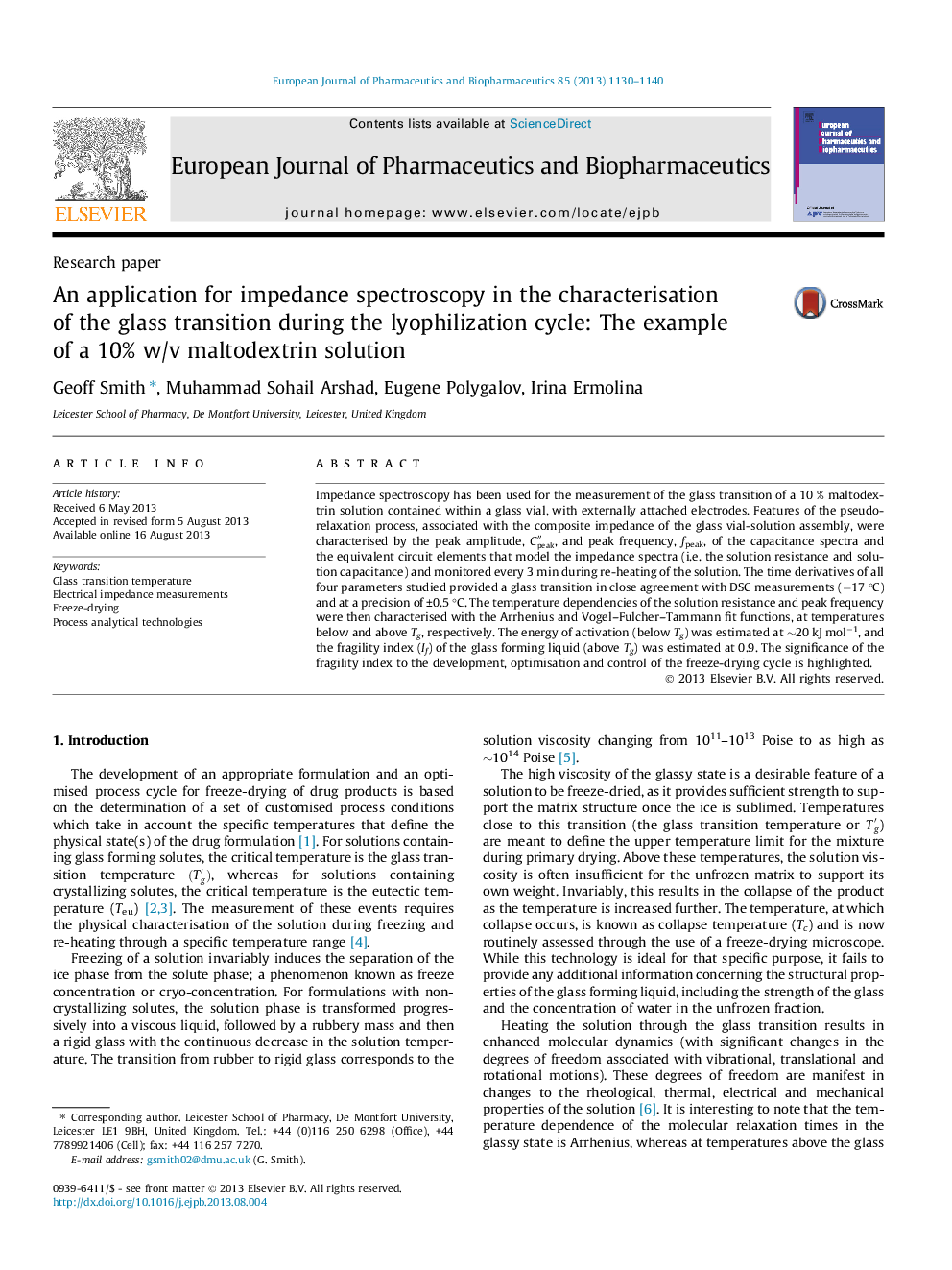| Article ID | Journal | Published Year | Pages | File Type |
|---|---|---|---|---|
| 8414386 | European Journal of Pharmaceutics and Biopharmaceutics | 2013 | 11 Pages |
Abstract
Impedance spectroscopy has been used for the measurement of the glass transition of a 10 % maltodextrin solution contained within a glass vial, with externally attached electrodes. Features of the pseudo-relaxation process, associated with the composite impedance of the glass vial-solution assembly, were characterised by the peak amplitude, Cpeakâ³, and peak frequency, fpeak, of the capacitance spectra and the equivalent circuit elements that model the impedance spectra (i.e. the solution resistance and solution capacitance) and monitored every 3 min during re-heating of the solution. The time derivatives of all four parameters studied provided a glass transition in close agreement with DSC measurements (â17 °C) and at a precision of ±0.5 °C. The temperature dependencies of the solution resistance and peak frequency were then characterised with the Arrhenius and Vogel-Fulcher-Tammann fit functions, at temperatures below and above Tg, respectively. The energy of activation (below Tg) was estimated at â¼20 kJ molâ1, and the fragility index (If) of the glass forming liquid (above Tg) was estimated at 0.9. The significance of the fragility index to the development, optimisation and control of the freeze-drying cycle is highlighted.
Related Topics
Life Sciences
Biochemistry, Genetics and Molecular Biology
Biotechnology
Authors
Geoff Smith, Muhammad Sohail Arshad, Eugene Polygalov, Irina Ermolina,
